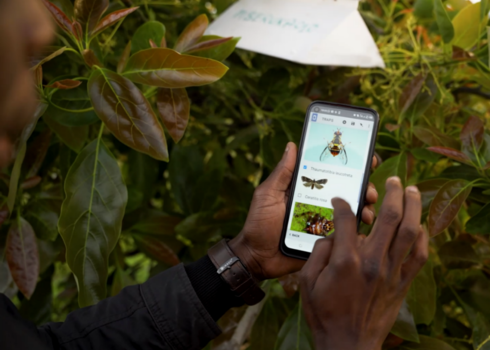
In solving any type of problem, historical information is key. It helps define the nature of the problem which then leads to sound practical solutions. Poor quality data and inadequate capacity to analyze it has always hindered the decision-making process. This is particularly true in dealing with challenges farmers face daily.
For example, imagine tackling a problem related to the spread of a newly introduced disease, be it of animal or plant origin; the routine order of events would be to send experts to collect information on the location and the number of affected households (livestock mortality, or crop and income losses). In the absence of digital tools, this information is recorded on standard paper questionnaires making it time-consuming and expensive.
Plant pests, such as locusts, are extremely mobile and can spread in no time. Similarly, some animal diseases, such as Rift Valley fever, can spread quickly through vectors. By the time, experts collect data, enter it into computers, analyze it, and report on it to decision-makers, the disease landscape is no longer the same and collected information is redundant. In addition, the budget estimates for the response actions would be inadequate.
The implementation of STOSAR in Tanzania included, among other things, the rolling out of digital tools for data collection and analysis. Regional trainings on the use of smartphone apps and web portals for data collection and real-time reporting using ODK and the Kobo Toolbox were conducted. Ministry officials were also trained in heat mapping of disease spread and risk using Quantum GIS. The knowledge and skills gained were immediately put to use by digitizing paper-based questionnaires, setting up a mobile data collection system, and managing the data collection exercise, reducing time for data collection and entry, and increasing the overall accuracy of datasets.
Soon after the STOSAR-supported ODK training in 2021, officials from the Tanzania Plant Health and Pesticides Authority (TPHPA) developed digital tools for monitoring pests and diseases in avocado orchards. The tools were tailored to increase availability and access to quality real-time data helping Tanzania fulfil its obligations to trading partners in sharing quality data on pest infestation to obtain market access.
On deploying the digital tools, the TPHPA now receives information on trap catches for insect pests of economic importance, infestation levels of diseases and images of newly introduced pests for early warning purposes, countrywide and in real-time. The system helped provide evidence of low infestation of pests of quarantine importance to South Africa and India, which subsequently led to the aforementioned countries allowing imports of avocados from Tanzania. This is because they deemed the data reliable.
For livestock, the STOSAR project trained veterinary officers to develop the Livestock Quarantine Pests Surveillance System that monitors the occurrence of foot and mouth disease (FMD), peste des petits ruminants (PPR), highly pathogenic avian influenza (HPAI), and the African swine fever (ASF). This data on the risk and spread of PPR was used to develop a risk-based surveillance plan, which, in turn, informed the requirements for the PPR vaccination campaign which was supported by the project. The information received helped to determine the appropriate number of vaccine vials to order and identified the risk hotspots based on the real-time data collected. About 3 million animals were vaccinated during the campaign.
As a result of the knowledge and skills gained from the STOSAR project, Tanzania continues to strengthen its national agriculture information management system (AIMS). The Ministry of Agriculture (MoA) intends to upgrade its Agriculture Trade and Market Information System by adding features that enhance data quality and improve evidence-based decision-making options for both the policymakers and its trading partners. A senior ICT Officer from the MoA, Mr Abisay Coy, said, “The STOSAR has revolutionized how we handle our agricultural data and statistics. We have reaped great benefits and intend to carry them forward with the same spirit”.
Tanzania is now positioned to make effective use of the SADC regional AIMS developed by the project and to identify opportunities and share the same with other SADC member countries.

